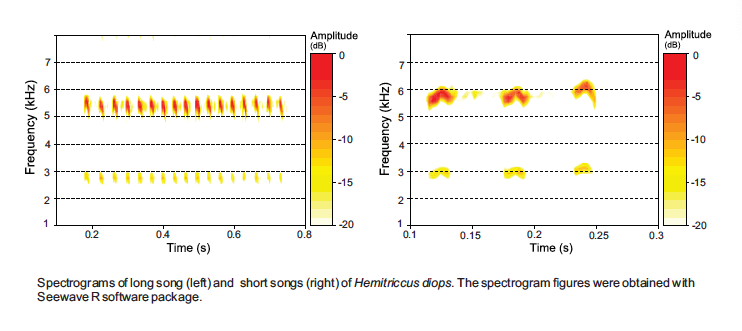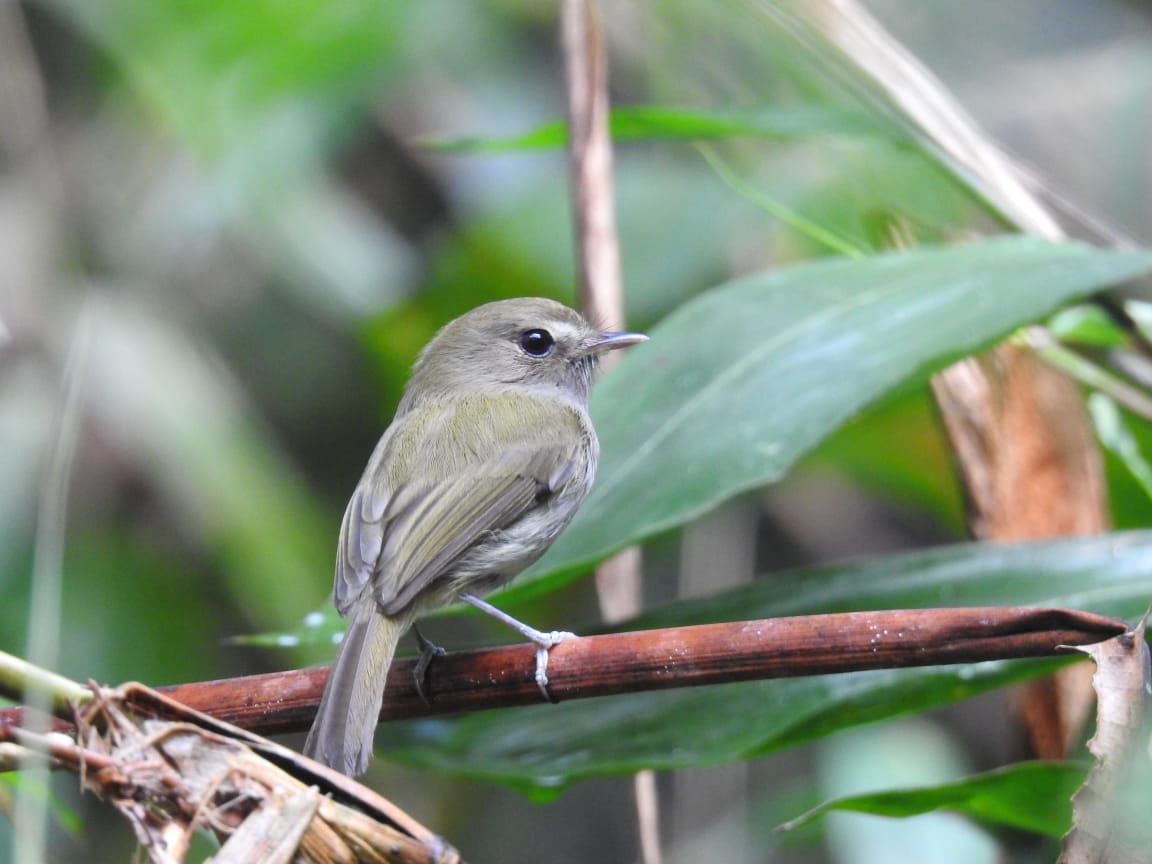By Adriana Acero and Marcos Maldonado-Coelho
Linked Paper: Ecological and evolutionary drivers of geographic variation in songs of a Neotropical suboscine bird: The Drab-breasted Bamboo Tyrant (Hemitriccus diops, Rhynchocyclidae), by Adriana Carolina Acero-Murcia, Fábio Raposo do Amaral, Fábio C. de Barros, Tiago da Silva Ribeiro, Cristina Y. Miyaki, Marcos Maldonado-Coelho, Ornithology.
Who has ever wondered if it is possible for a bird’s song to change due to geography, genetics, vegetation or even climate? A few years ago, while completing her Master’s thesis at the Federal University of São Paulo in Brazil, Adriana Acero wondered whether or not prior vocal and genetic data from distinct species of Atlantic Forest birds could shed light on the variations of one such species, the Drab-breasted Bamboo Tyrant (Hemitriccus diops), a small insectivorous bird that inhabits the mid- and understory of the Atlantic Forest. This suboscine bird belongs to a group of passerine birds that are among the most diverse in the Neotropics and thought not to learn their songs. Accordingly, suboscine birds are well suited for investigating factors that contribute to song variation in birds without the confounding effect of learning, which is, by contrast, a major mechanism influencing song acquisition in the oscine songbirds, hummingbirds and parrots.
Could there be any geographical differences in the songs of the Bamboo Tyrant? Adriana wondered. If yes, could these differences be related to genetics, the environment, or both? We tried to answer these questions by evaluating the variation in two song types of this bird.
For each locality where we had vocal samples, we used variables such as forest cover, temperature, and precipitation to assess environmental influences on song variation. Then, we tested the Acoustic Adaptation Hypothesis, which predicts that songs will change relative to ecological conditions, to determine whether these environmental variables could affect particular aspects of songs, such as frequency and length of the song notes, and song pace. In addition to studying adaptive factors affecting song variation, we were also interested in evaluating if any changes in songs across the bird range could be related to the genes; that is, if a process other than natural selection, such as chance events reflected in the variation of genes across generations, could also explain song variation. To date, the genetic basis and patterns of inheritance in suboscine songs remain elusive. At the time of the analyses, we already gleaned some knowledge about the spatial variation in this gene, as reported in a previous study, which, in a nutshell, demonstrated that the observed genetic divergence among the Bamboo Tyrant populations in the central and southern parts of the Atlantic Forest were likely a consequence of geographic isolation.
To obtain Bamboo Tyrant songs, we use our own recordings, but also songs from colleagues and from online databases such as Wikiaves, Xenocanto, Macaulay Library and the Fonoteca Neotropical Jacques Vielliard. We then quantified the structure of these songs using an acoustic software. With this integrative data set, we were able to show that there is limited geographical differentiation in both types of songs, and that this was associated with the low genetic differentiation found between northern and southern populations. In other words, the relationships between the songs, geography, and genetics were subtle and reflected the recent separation of these geographic lineages. We also found that the interval between notes and song rhythm were related to the amount of surrounding forest.

Our study thus revealed some interesting findings. First, there are geographic differences in song structure, but this variation is subtle. Second, the songs of the Bamboo Tyrant could have been influenced by different evolutionary processes, such as natural selection and random variation in genes. But ruling out the role of sexual selection or other processes in this type of study is difficult. We encourage more research teams to join us on this journey to understand the ecological and evolutionary underpinnings of song variation in suboscine birds. We are excited to continue this research program to reveal more interesting aspects of songs in Neotropical birds.
